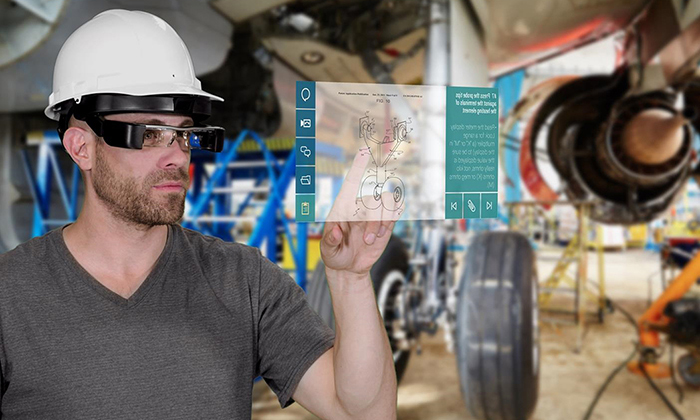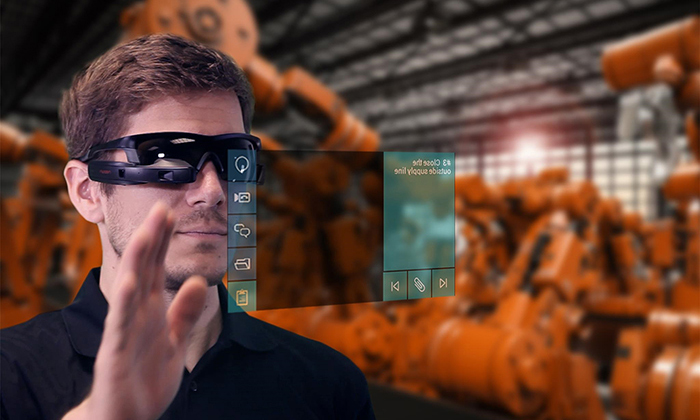Augmented Reality: Changing the Way We Work
27 Sep 2017, Posted by in Technologies
It’s a fact that augmented reality (AR) is reshaping the way we work. And yes, it is happening right now, and it is going to grow faster than anticipated. Today, I’d like to introduce you to a company called Atheer. I recently met with their SVP of marketing, Amar Dhaliwal, and he introduced me to the amazing vision Soulaiman Itani, their CEO and founder, has for augmented reality in the workplace, and soon in other areas.
Atheer’s focus is to connect digital and physical workspaces inside enterprises and as a result transform the productivity, accuracy, quality and safety of their workers. Their technologies provide rich AR applications on smart glasses of “your choice,” meaning it is hardware agnostic, enabling enterprises to use the glasses that best suit them. Their approach starts with something I have been preaching for some time now. In order to innovate, and have augmented reality reach its full potential you have to break with old models and paradigms. You have to forget the mouse, the keyboard, and the concept of sitting and staring at a screen for hours. With this in mind, Atheer developed multi-modal technology, meaning it supports many forms of interactions including gestures, head motion and voice.
Think about it this way, if you are going to use AR, one of the very first things you need to consider is how the user is going to interact with the digital and real world. This would strongly influence your hardware and software choices (which are many). The new ways to interact that you need to consider are gesture recognition, voice commands, motion, eye interaction, and touch. All of these are different unique technologies that can work alone, or together. But in order to select the correct ones you need to consider the environment, and how the user will perform his/her work. With Atheer’s technology, businesses (and more importantly their users) can select the interaction mode(s) that works best for them and switch between them seamlessly.
Another smart move by Atheer is that they have paid careful consideration to the use of existing operating systems by smart glass manufacturers and enterprises. With their open platform and broad OS approach they are able to support the wide variety of IT eco-systems found in use today.
Another plus is that Atheer provides flexibility for deployment options with a SaaS model. The technology is available now. If you want to learn more about Atheer visit their website at http://atheerair.com/ and get a glimpse of what’s coming.
If you want to learn more about this topic, and get a jump into AR you can meet Soulaiman in person, just join us at my panel at Digital Hollywood this coming October 10, at 12 Noon http://www.dhsessions4.com/Tuesday17Fl6.html . We’ll also be joined there by Leon Laroue (Epson Moverio), Eric Trabold (Avegant), Michael Leventhal (Holmes Weinberg, PC), Tom Wesselman
It’s a fact that augmented reality (AR) is reshaping the way we work. And yes, it is happening right now, and it is going to grow faster than anticipated. Today, I’d like to introduce you to a company called Atheer. I recently met with their SVP of marketing, Amar Dhaliwal, and he introduced me to the amazing vision Soulaiman Itani, their CEO and founder, has for augmented reality in the workplace, and soon in other areas.
Atheer’s focus is to connect digital and physical workspaces inside enterprises and as a result transform the productivity, accuracy, quality and safety of their workers. Their technologies provide rich AR applications on smart glasses of “your choice,” meaning it is hardware agnostic, enabling enterprises to use the glasses that best suit them. Their approach starts with something I have been preaching for some time now. In order to innovate, and have augmented reality reach its full potential you have to break with old models and paradigms. You have to forget the mouse, the keyboard, and the concept of sitting and staring at a screen for hours. With this in mind, Atheer developed multi-modal technology, meaning it supports many forms of interactions including gestures, head motion and voice.
Think about it this way, if you are going to use AR, one of the very first things you need to consider is how the user is going to interact with the digital and real world. This would strongly influence your hardware and software choices (which are many). The new ways to interact that you need to consider are gesture recognition, voice commands, motion, eye interaction, and touch. All of these are different unique technologies that can work alone, or together. But in order to select the correct ones you need to consider the environment, and how the user will perform his/her work. With Atheer’s technology, businesses (and more importantly their users) can select the interaction mode(s) that works best for them and switch between them seamlessly.
Another smart move by Atheer is that they have paid careful consideration to the use of existing operating systems by smart glass manufacturers and enterprises. With their open platform and broad OS approach they are able to support the wide variety of IT eco-systems found in use today.
Another plus is that Atheer provides flexibility for deployment options with a SaaS model. The technology is available now. If you want to learn more about Atheer visit their website at http://atheerair.com/ and get a glimpse of what’s coming.
If you want to learn more about this topic, and get a jump into AR you can meet Soulaiman in person, just join us at my panel at Digital Hollywood this coming October 10, at 12 Noon http://www.dhsessions4.com/Tuesday17Fl6.html . We’ll also be joined there by Leon Laroue (Epson Moverio), Eric Trabold (Avegant), Michael Leventhal (Holmes Weinberg, PC), Tom Wesselman (Plantronics), and Mike Hildebrandt (DAQRI). Come and learn about how your company can be part of this technological revolution and tremendous business opportunity.





